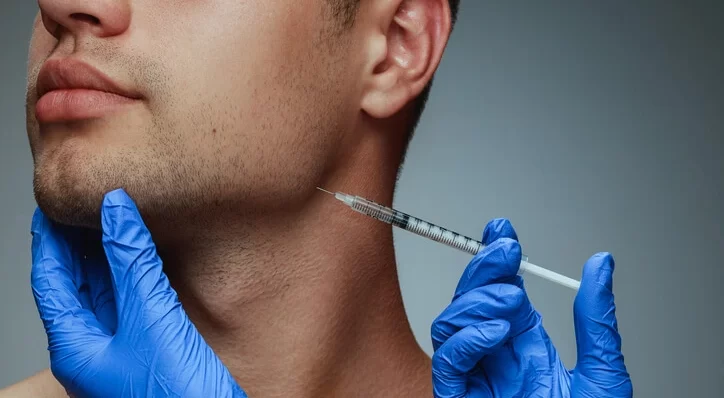Botulinum toxin, commonly known as Botox, has long been associated with cosmetic procedures for reducing wrinkles and fine lines. However, its applications extend beyond the realm of aesthetics. In recent years, the use of Botox in dentistry has gained traction, opening up new avenues for therapeutic and functional enhancements. This comprehensive article delves into the origins of Botox, its cosmetic uses, and the innovative applications emerging in dentistry.
Table of Contents
ToggleUnderstanding Botox
Botox is derived from the bacterium Clostridium botulinum, a naturally occurring organism. The toxin produced by this bacterium is potent and can cause botulism, a severe and potentially life-threatening illness. However, in controlled and diluted forms, it has found valuable applications in medicine and cosmetic procedures.
Cosmetic Uses of Botox
- Wrinkle Reduction
- Migraine Treatment
- Hyperhidrosis Management
Wrinkle Reduction
The most well-known use of Botox is in the field of aesthetic medicine. By temporarily paralyzing muscles, Botulinum toxin smoothens wrinkles and fine lines, particularly those around the eyes, forehead, and mouth. The procedure is non-invasive and has become a popular choice for individuals seeking a youthful appearance without undergoing surgery.
Migraine Treatment
Botox has shown efficacy in alleviating chronic migraines. When injected into specific areas of the head and neck, it can reduce muscle tension and mitigate the frequency and intensity of migraines. This therapeutic application has provided relief for many patients who previously struggled to find effective treatments.
Hyperhidrosis Management
Excessive sweating, or hyperhidrosis, can significantly impact an individual’s quality of life. Botox injections in areas prone to excessive sweating, such as the underarms, palms, and feet, can temporarily block the signals that trigger sweat production, offering relief for those suffering from this condition.
Botox in Dentistry
The use of Botox in dentistry represents a paradigm shift in the field, with applications ranging from therapeutic treatments to cosmetic enhancements.
- Temporomandibular Joint (TMJ) Disorders
- Bruxism Management
- Gummy Smile Correction
- Dental Implant Procedures
- Facial Pain and Tension
Temporomandibular Joint (TMJ) Disorders
Temporomandibular joint disorders can cause jaw pain, headaches, and difficulty in jaw movement. Botox injections into the jaw muscles can alleviate tension and reduce the symptoms associated with TMJ disorders. This non-surgical approach provides patients with a viable alternative to traditional treatments.
Bruxism Management
Bruxism, or teeth grinding, is a common dental issue that can lead to significant oral health problems, including tooth wear and jaw pain. Botox injections in the jaw muscles can help relax the muscles, reducing the intensity of teeth grinding and protecting the teeth from damage.
Gummy Smile Correction
Some individuals exhibit a gummy smile, where an excessive amount of gum tissue is exposed when smiling. Botox injections can be strategically administered to weaken the muscles responsible for lifting the upper lip excessively, resulting in a more balanced and aesthetically pleasing smile.
Dental Implant Procedures
Botox has shown promise in aiding dental implant procedures. By relaxing the surrounding muscles, it can facilitate the insertion of implants, reduce discomfort, and enhance the overall experience for the patient.
Facial Pain and Tension
Botox injections have been used to manage facial pain and tension associated with various dental conditions. By targeting specific muscles, Botulinum toxin can provide relief from chronic pain, improving the overall well-being of patients.
Current Research and Future Directions
The use of Botox in dentistry is a dynamic and evolving field, with ongoing research exploring novel applications and refining existing techniques. Some areas of current research and potential future directions include:
- Orthodontic Applications
- Salivary Gland Dysfunction
- Facial Asymmetry Correction
- Wound Healing
- Dental Anxiety Management
Orthodontic Applications
Preliminary studies suggest that Botox injections may aid in orthodontic treatments by assisting in the repositioning of teeth and reducing the discomfort associated with orthodontic procedures. This potential application could revolutionize traditional orthodontic approaches and provide patients with a more comfortable experience.
Salivary Gland Dysfunction
Botox has demonstrated effectiveness in managing conditions related to salivary gland dysfunction, such as excessive drooling (sialorrhea). This could be particularly beneficial for patients with neurological disorders or those undergoing certain medical treatments that lead to increased salivation.
Facial Asymmetry Correction
In cases where facial asymmetry is linked to muscle imbalance, Botox injections can be strategically employed to achieve a more symmetrical facial appearance. This cosmetic enhancement could be integrated into comprehensive dental and facial esthetic treatments.
Wound Healing
Research is ongoing to explore the potential role of Botox in enhancing wound healing after oral and maxillofacial surgeries. By modulating inflammation and promoting tissue regeneration, Botulinum toxin may contribute to faster recovery and reduced postoperative complications.
Dental Anxiety Management
Botox injections may have a role in managing dental anxiety by temporarily relaxing facial muscles associated with stress and tension. Integrating Botulinum toxin into dental anxiety management protocols could improve the overall patient experience and encourage individuals to seek necessary dental care without fear or apprehension.
Conclusion
Botox, once primarily associated with cosmetic enhancements, has evolved into a versatile tool with diverse applications in dentistry. From addressing aesthetic concerns to managing dental disorders, Botulinum toxin injections offer patients minimally invasive and effective solutions. The integration of Botox into dental practices reflects a growing trend towards interdisciplinary approaches, where medical and dental professionals collaborate to provide comprehensive care. As research continues and technology advances, the potential applications of Botulinum toxin in dentistry are likely to expand, further revolutionizing the landscape of oral healthcare.

